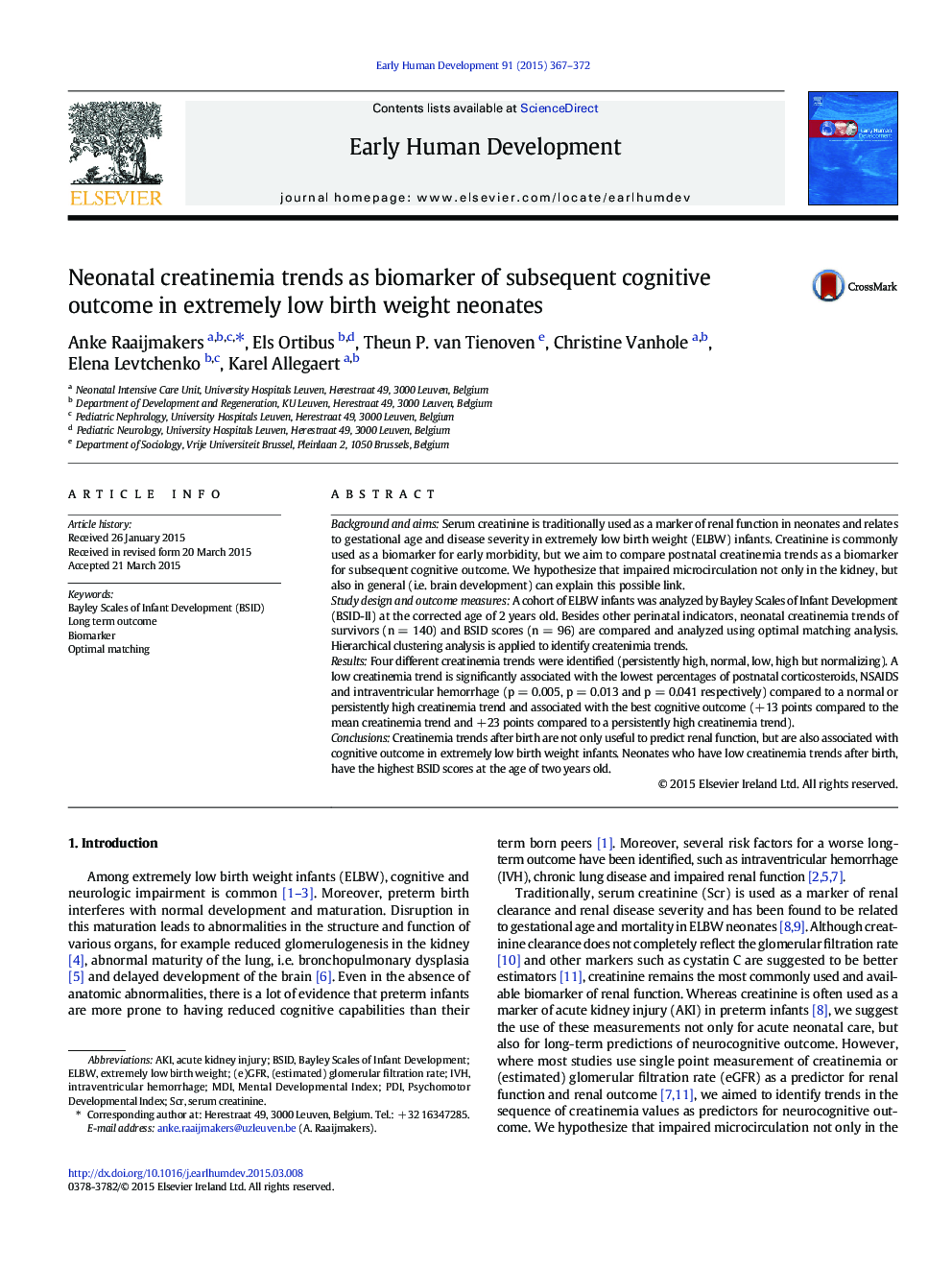| Article ID | Journal | Published Year | Pages | File Type |
|---|---|---|---|---|
| 3916431 | Early Human Development | 2015 | 6 Pages |
•Neonatal creatinemia trends were analyzed using optimal matching analysis.•We can discern four creatinemia trends in extremely low birth weight neonates.•We suggest that these trends are a useful biomarker of cognitive outcome.•A low creatinemia trend after birth is associated with the best cognitive outcome.•Different trends might be reflecting individual differences in microcirculation.
Background and aimsSerum creatinine is traditionally used as a marker of renal function in neonates and relates to gestational age and disease severity in extremely low birth weight (ELBW) infants. Creatinine is commonly used as a biomarker for early morbidity, but we aim to compare postnatal creatinemia trends as a biomarker for subsequent cognitive outcome. We hypothesize that impaired microcirculation not only in the kidney, but also in general (i.e. brain development) can explain this possible link.Study design and outcome measuresA cohort of ELBW infants was analyzed by Bayley Scales of Infant Development (BSID-II) at the corrected age of 2 years old. Besides other perinatal indicators, neonatal creatinemia trends of survivors (n = 140) and BSID scores (n = 96) are compared and analyzed using optimal matching analysis. Hierarchical clustering analysis is applied to identify createnimia trends.ResultsFour different creatinemia trends were identified (persistently high, normal, low, high but normalizing). A low creatinemia trend is significantly associated with the lowest percentages of postnatal corticosteroids, NSAIDS and intraventricular hemorrhage (p = 0.005, p = 0.013 and p = 0.041 respectively) compared to a normal or persistently high creatinemia trend and associated with the best cognitive outcome (+ 13 points compared to the mean creatinemia trend and + 23 points compared to a persistently high creatinemia trend).ConclusionsCreatinemia trends after birth are not only useful to predict renal function, but are also associated with cognitive outcome in extremely low birth weight infants. Neonates who have low creatinemia trends after birth, have the highest BSID scores at the age of two years old.
